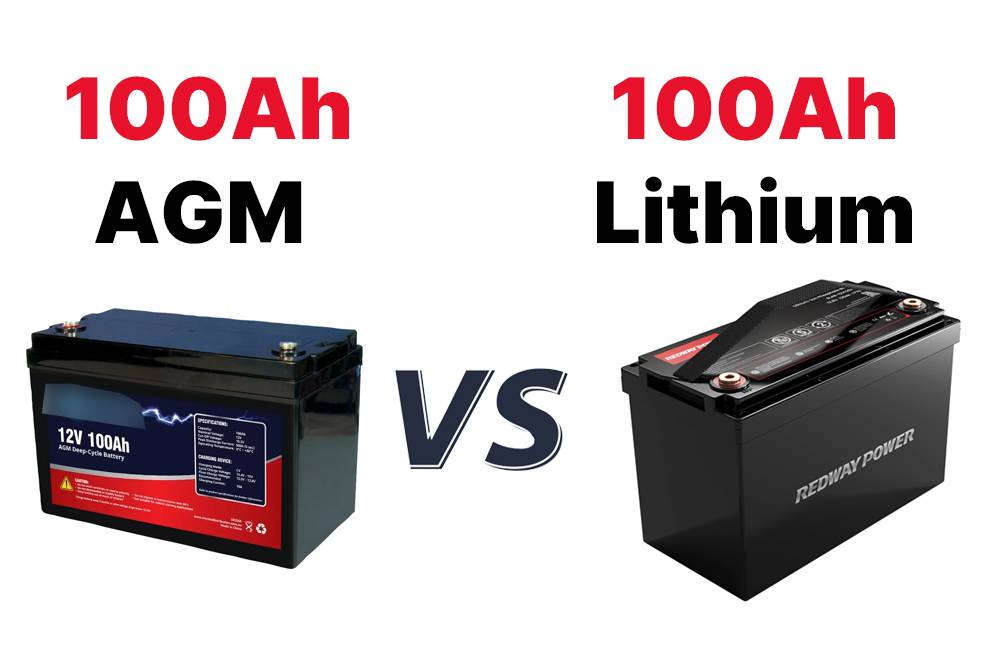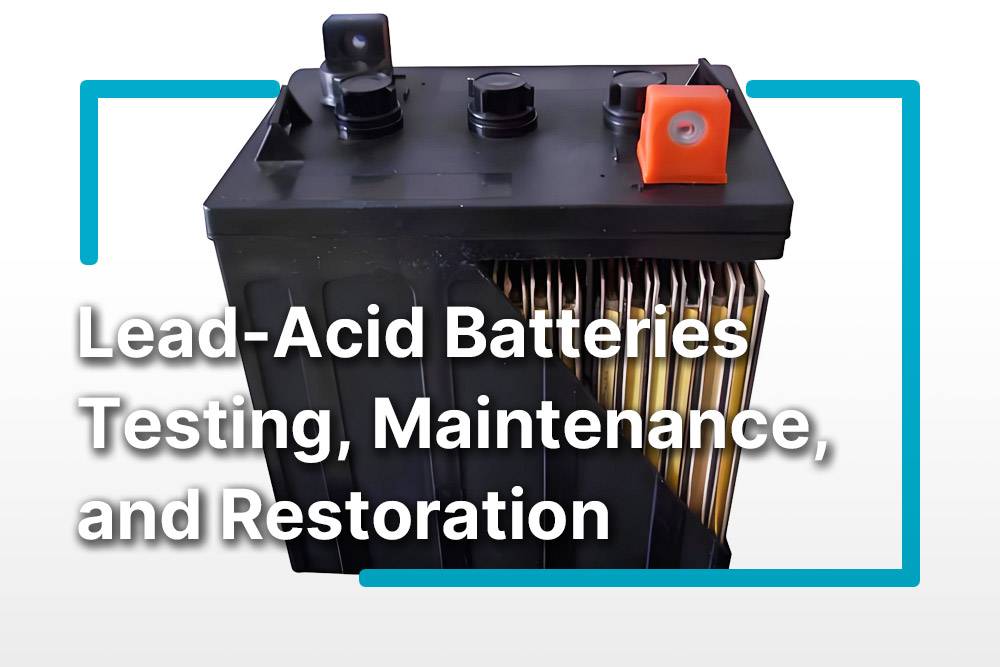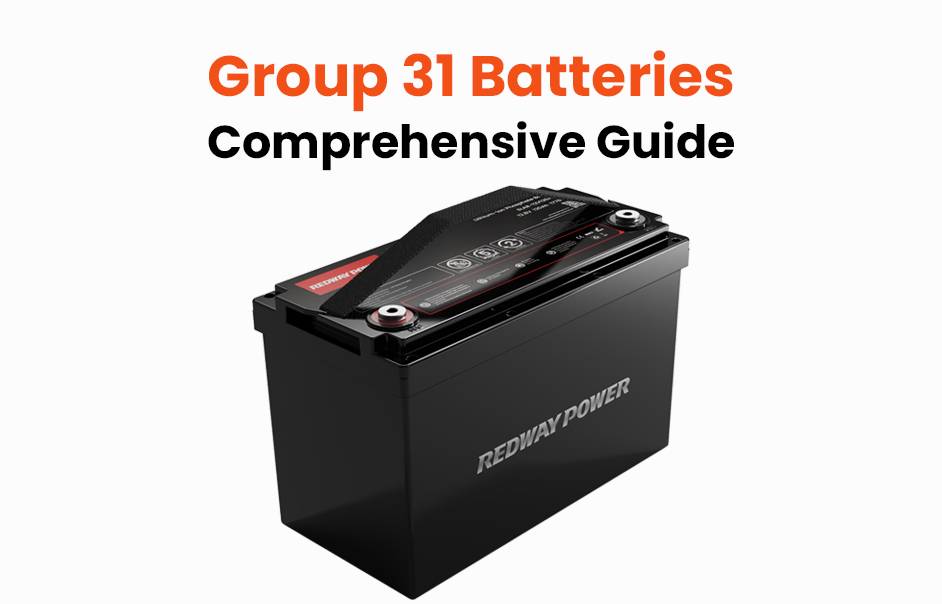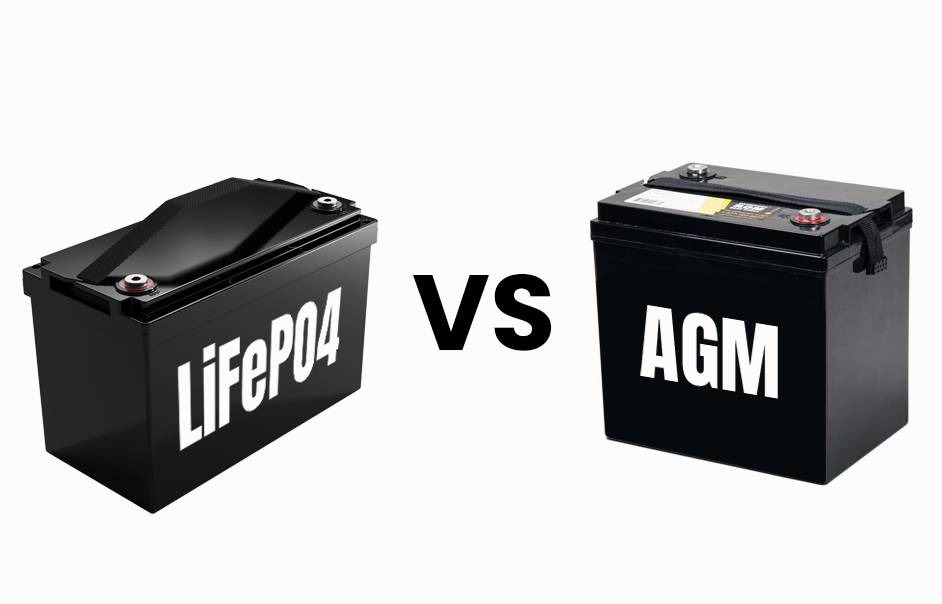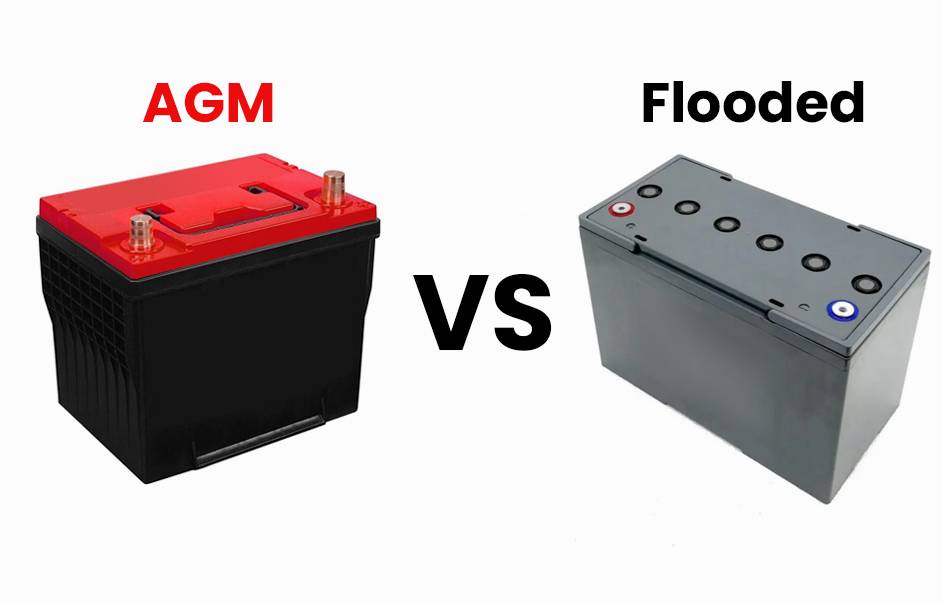- Rack-mounted Lithium Battery
- Golf Cart Lithium Battery
-
Golf Cart Lithium Battery
- 36V 50Ah (for Golf Carts)
- 36V 80Ah (for Golf Carts)
- 36V 100Ah (for Golf Carts)
- 48V 50Ah (for Golf Carts)
- 48V 100Ah (Discharge 100A for Golf Carts)
- 48V 100Ah (Discharge 150A for Golf Carts)
- 48V 100Ah (Discharge 200A for Golf Carts)
- 48V 120Ah (for Golf Carts)
- 48V 150Ah (for Golf Carts)
- 48V 160Ah (Discharge 100A for Golf Carts)
- 48V 160Ah (Discharge 160A for Golf Carts)
-
Golf Cart Lithium Battery
- Forklift Lithium Battery
- 12V Lithium Battery
- 24V Lithium Battery
- 36V Lithium Battery
- 48V Lithium Battery
-
48V LiFePO4 Battery
- 48V 50Ah
- 48V 50Ah (for Golf Carts)
- 48V 60Ah (8D)
- 48V 100Ah (8D)
- 48V 100Ah
- 48V 100Ah (Discharge 100A for Golf Carts)
- 48V 100Ah (Discharge 150A for Golf Carts)
- 48V 100Ah (Discharge 200A for Golf Carts)
- 48V 150Ah (for Golf Carts)
- 48V 160Ah (Discharge 100A for Golf Carts)
- 48V 160Ah (Discharge 160A for Golf Carts)
-
48V LiFePO4 Battery
- 60V Lithium Battery
-
60V LiFePO4 Battery
- 60V 20Ah
- 60V 30Ah
- 60V 50Ah
- 60V 50Ah (Small Size / Side Terminal)
- 60V 100Ah (for Electric Motocycle, Electric Scooter, LSV, AGV)
- 60V 100Ah (for Forklift, AGV, Electric Scooter, Sweeper)
- 60V 150Ah (E-Motocycle / E-Scooter / E-Tricycle / Tour LSV)
- 60V 200Ah (for Forklift, AGV, Electric Scooter, Sweeper)
-
60V LiFePO4 Battery
- 72V~96V Lithium Battery
- E-Bike Battery
- All-in-One Home-ESS
- Wall-mount Battery ESS
-
Home-ESS Lithium Battery PowerWall
- 24V 100Ah 2.4kWh PW24100-S PowerWall
- 48V 50Ah 2.4kWh PW4850-S PowerWall
- 48V 50Ah 2.56kWh PW5150-S PowerWall
- 48V 100Ah 5.12kWh PW51100-F PowerWall (IP65)
- 48V 100Ah 5.12kWh PW51100-S PowerWall
- 48V 100Ah 5.12kWh PW51100-H PowerWall
- 48V 200Ah 10kWh PW51200-H PowerWall
- 48V 300Ah 15kWh PW51300-H PowerWall
PowerWall 51.2V 100Ah LiFePO4 Lithium Battery
Highly popular in Asia and Eastern Europe.
CE Certification | Home-ESS -
Home-ESS Lithium Battery PowerWall
- Portable Power Stations
AGM vs Flooded Battery, Which is Better?
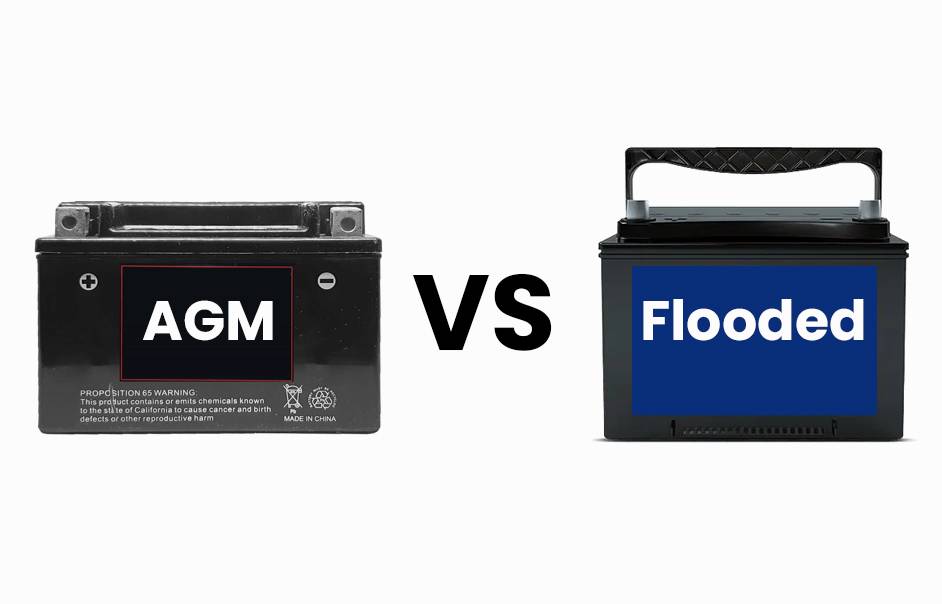
Embark on a journey through battery technology, where AGM (Absorbent Glass Mat) and Flooded batteries take the spotlight in the automotive and marine industry. This blog post unravels the advantages and disadvantages of each, guiding you through the decision-making process. Whether for your car or boat, join us in navigating the intricate world of AGM versus Flooded batteries to ensure the optimal power choice for your specific needs!
Types of Batteries: AGM and Flooded
Exploring battery options? Dive into the world of AGM (Absorbent Glass Mat) and Flooded batteries with this concise guide:
- AGM Batteries: Engineered with a fiberglass mat soaked in electrolyte, AGM batteries ensure even acid distribution, delivering efficient performance. Maintenance-free, they eliminate worries about fluid levels, making them ideal for hassle-free use.
- Flooded Batteries: Featuring liquid electrolytes flowing over lead plates, flooded batteries offer affordability. While periodic maintenance is required, involving distilled water additions, they present a budget-friendly alternative to AGM batteries.
Consider factors like cost, lifespan, and maintenance preferences to choose between AGM and flooded batteries based on your unique needs. Whether prioritizing convenience or budget, make an informed decision for optimal performance.
Pros and Cons of AGM Batteries
AGM (Absorbent Glass Mat) batteries have become popular due to their advantages over traditional flooded batteries. Here’s a brief breakdown:
- Maintenance-Free Convenience:
- AGM batteries don’t require regular water refilling, making them hassle-free and ideal for low-maintenance needs.
- Exceptional Durability:
- Designed to withstand vibrations, AGM batteries are durable, making them suitable for rough conditions in off-road vehicles or marine applications.
- They have a longer lifespan compared to flooded batteries, offering better value.
- Performance Prowess:
- AGM batteries provide consistent power even under heavy loads with lower internal resistance.
- Quicker recharge times and higher discharge rates are possible, enhancing overall performance.
- Enhanced Safety Features:
- Sealed and spill-proof, AGM batteries reduce the risk of acid spills or gas emissions, enhancing safety.
Considerations:
- Cost: AGM batteries are more expensive upfront.
- Lifespan: Extreme discharging can reduce their lifespan over time.
When choosing between AGM and flooded batteries for automotive or renewable energy use, weigh these factors to determine the best fit for your needs.
Pros and Cons of Flooded Batteries
Flooded batteries, also known as wet cell batteries, are a long-standing and cost-effective choice for various applications. Let’s explore their pros and cons:
- Affordability:
- Flooded batteries are budget-friendly, making them a cost-effective option compared to AGM or lithium-ion batteries.
- High Capacity:
- These batteries can store a large amount of energy, suitable for applications requiring sustained power over extended periods and handling high surge currents.
- Maintenance Requirements:
- One drawback is the need for regular maintenance, involving inspection and topping up with distilled water due to the liquid electrolyte. This may not suit those seeking low-maintenance options.
Considerations:
- Risk of Acid Leakage:
- Improper handling or damage can pose a risk of acid leakage, requiring caution during installation.
- Temperature Performance:
- While performing well in cold conditions, flooded batteries may struggle in hot environments, leading to faster electrolyte evaporation and reduced battery life.
Carefully weigh these factors to determine if flooded batteries align with your specific requirements.
Applications for AGM and Flooded Batteries
AGM batteries and flooded batteries serve diverse applications due to their distinct characteristics. Let’s explore their uses:
AGM Batteries:
- Automotive Industry:
- AGM batteries excel as starting batteries for vehicles, delivering high cranking power for quick and efficient engine starts.
- Marine Industry:
- Widely used in boats, AGM batteries withstand vibrations and rough conditions, ensuring reliable power for engine starts and onboard electronics.
- Recreational Vehicles (RVs) and Solar Systems:
- AGM batteries are favored by RV enthusiasts for camping trips, providing power for appliances. They are also chosen for off-grid solar systems to store excess energy.
Flooded Batteries:
- Industrial Settings:
- Commonly found in industrial applications, flooded batteries offer backup power during emergencies and serve as a primary energy source in remote locations, such as telecommunications facilities, data centers, and hospitals.
- Golf Carts:
- Flooded deep cycle lead-acid batteries are widely used in golf carts, delivering sustained power over extended periods efficiently and handling repeated charging cycles well.
Considerations:
- Budget and Maintenance:
- The choice between AGM and flooded batteries depends on factors like budget, maintenance preferences, and specific application requirements.
Understanding these applications helps make an informed decision based on individual needs.
Factors to Consider when Choosing between AGM and Flooded
When faced with the decision of selecting the right battery for your needs, understanding the key factors is paramount. Here’s a concise breakdown to guide you:
- Battery Performance: AGM batteries outshine flooded batteries with higher cycle life, faster recharge rates, and resilience to deep discharges, making them optimal for performance-centric applications.
- Maintenance Requirements: AGM batteries stand out for their minimal maintenance needs, contrasting with flooded batteries that require regular water refilling and equalization charges.
- Cost: While flooded batteries are more budget-friendly initially, considering the lower maintenance and longer lifespan of AGMs may prove them to be a more cost-efficient choice in the long run.
- Safety Concerns: AGM batteries offer sealed construction, eliminating the risk of leakage or spillage associated with liquid electrolyte in flooded lead-acid cells.
- Technical Expertise: Installation and usage requirements differ, prompting consideration of your technical expertise or access to professional assistance when choosing between AGM and flooded options.
In summary, make a thoughtful decision based on your specific power needs, budget constraints, maintenance preferences, and available technical expertise. AGMs excel in performance, longevity, and reduced maintenance, while flooded batteries offer affordability upfront with regular maintenance needs.














